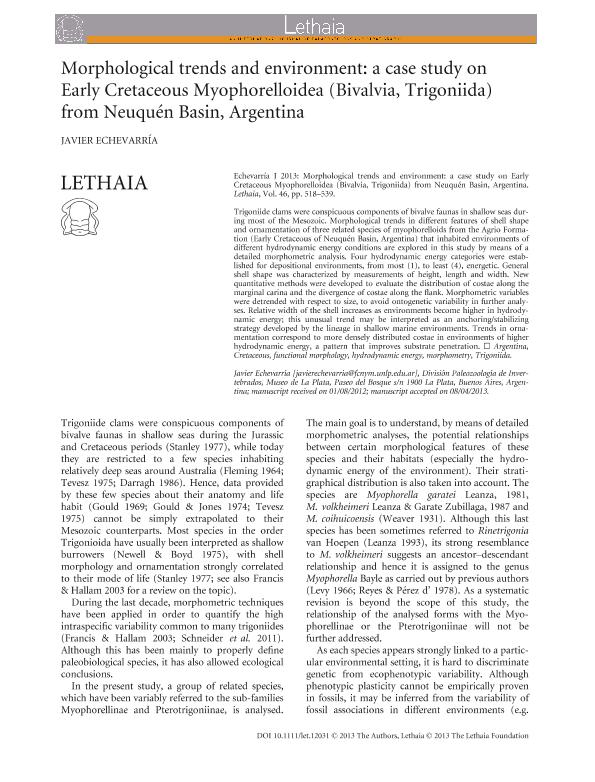Artículo
Morphological trends and environment: a case study on early Cretaceous Myophorelloidea (Bivalvia, Trigoniida) from Neuqu en Basin, Argentina
Fecha de publicación:
10/2013
Editorial:
Wiley
Revista:
Lethaia
e-ISSN:
1502-3931
Idioma:
Inglés
Tipo de recurso:
Artículo publicado
Clasificación temática:
Resumen
Trigoniide clams were conspicuous components of bivalve faunas in shallow seas during most of the Mesozoic. Morphological trends in different features of shell shape and ornamentation of three related species of myophorelloids from the Agrio Formation (Early Cretaceous of Neuqu en Basin, Argentina) that inhabited environments of different hydrodynamic energy conditions are explored in this study by means of a detailed morphometric analysis. Four hydrodynamic energy categories were established for depositional environments, from most (1), to least (4), energetic. General shell shape was characterized by measurements of height, length and width. New quantitative methods were developed to evaluate the distribution of costae along the marginal carina and the divergence of costae along the flank. Morphometric variables were detrended with respect to size, to avoid ontogenetic variability in further analyses. Relative width of the shell increases as environments become higher in hydrodynamic energy; this unusual trend may be interpreted as an anchoring/stabilizing strategy developed by the lineage in shallow marine environments. Trends in ornamentation correspond to more densely distributed costae in environments of higher hydrodynamic energy, a pattern that improves substrate penetration.
Archivos asociados
Licencia
Identificadores
Colecciones
Articulos(CCT - LA PLATA)
Articulos de CTRO.CIENTIFICO TECNOL.CONICET - LA PLATA
Articulos de CTRO.CIENTIFICO TECNOL.CONICET - LA PLATA
Citación
Echevarría, Javier; Morphological trends and environment: a case study on early Cretaceous Myophorelloidea (Bivalvia, Trigoniida) from Neuqu en Basin, Argentina; Wiley; Lethaia; 46; 4; 10-2013; 518-539
Compartir
Altmétricas




